Alaska, known for its unique climatic conditions, poses a distinct environment for poultry farming. The selection of chicken breeds that can endure and thrive in Alaskan conditions is crucial for successful poultry farming in this region.
This guide seeks to explore the best chicken breeds for Alaska, their characteristics, and care essentials to ensure a flourishing poultry enterprise.
Key Takeaways:
- Identifying the unique climatic challenges of Alaska in poultry farming
- Selection of chicken breeds based on cold-weather hardiness
- Insightful tips on setting up the coop and managing chickens in extreme cold
Choosing the Right Breed for Alaska
The choice of chicken breed is fundamental to poultry farming success in Alaska. The right breed can comfortably endure the cold temperatures, ensuring healthy growth and consistent egg production. Some of the essential characteristics to look for include:
- Cold hardiness: ability to withstand cold temperatures without succumbing to frostbite or other cold-induced ailments.
- Feathering: Adequate feathering helps retain body heat during the chilly months.
- Comb Size: Smaller combed breeds are preferred, as large combed breeds are susceptible to frostbite.
Benefits of Suitable Breeds
Choosing the right breed ensures:
- Consistent Egg Production: Cold-hardy breeds continue laying eggs even during the chilly seasons.
- Lower Mortality Rates: Reduced susceptibility to cold-induced ailments ensures lower mortality rates.
- Ease of Management: Hardier breeds require less intensive care during the chilly months.
Top Chicken Breeds for Alaska
Ameraucana
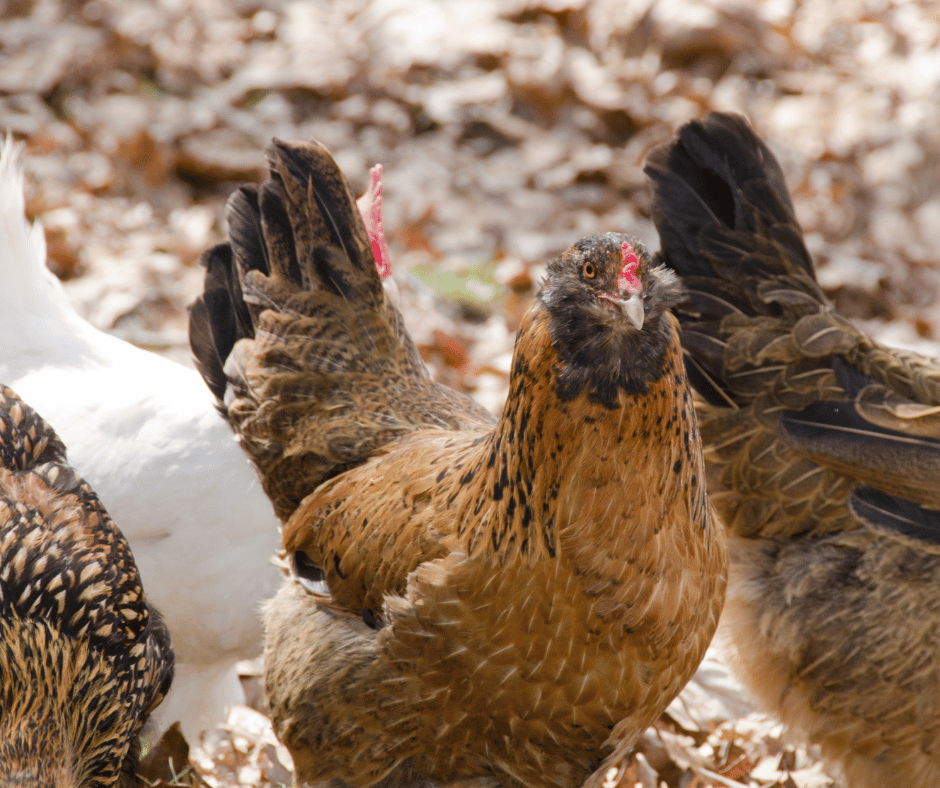
Known for their cold-weather hardiness and playful character, Ameraucanas also produce unique blue or green eggs.
Their small size and distinctive appearance make them a favorite among poultry enthusiasts.
Characteristics:
- Cold Resistance: exceptional cold resistance due to extensive feathering.
- Egg Production: Around 150 green to blue-colored eggs are produced annually.
- Weight: Roosters weigh up to 6.5 lbs, and hens up to 5.5 lbs.
Australorp
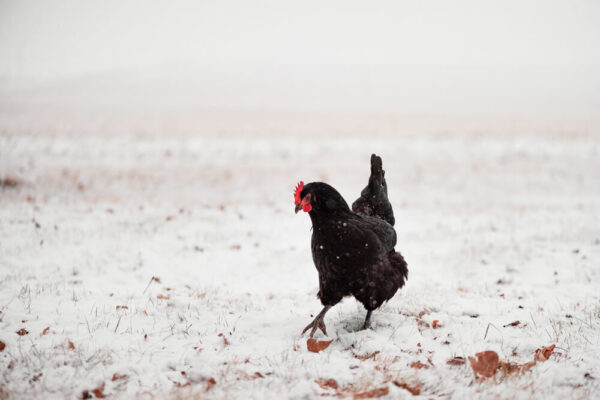
Australorps are robust, hardy birds that thrive in all climates.
They are known for their friendly nature and prolific egg-laying capacity, making them a preferred choice for many poultry farmers.
Characteristics:
- Climate adaptability: thriving in diverse climates
- Egg Production: Produces 250–300 medium brown eggs annually.
- Weight: Adult hens weigh up to 7 lbs, and roosters up to 10 lbs.
Brahma
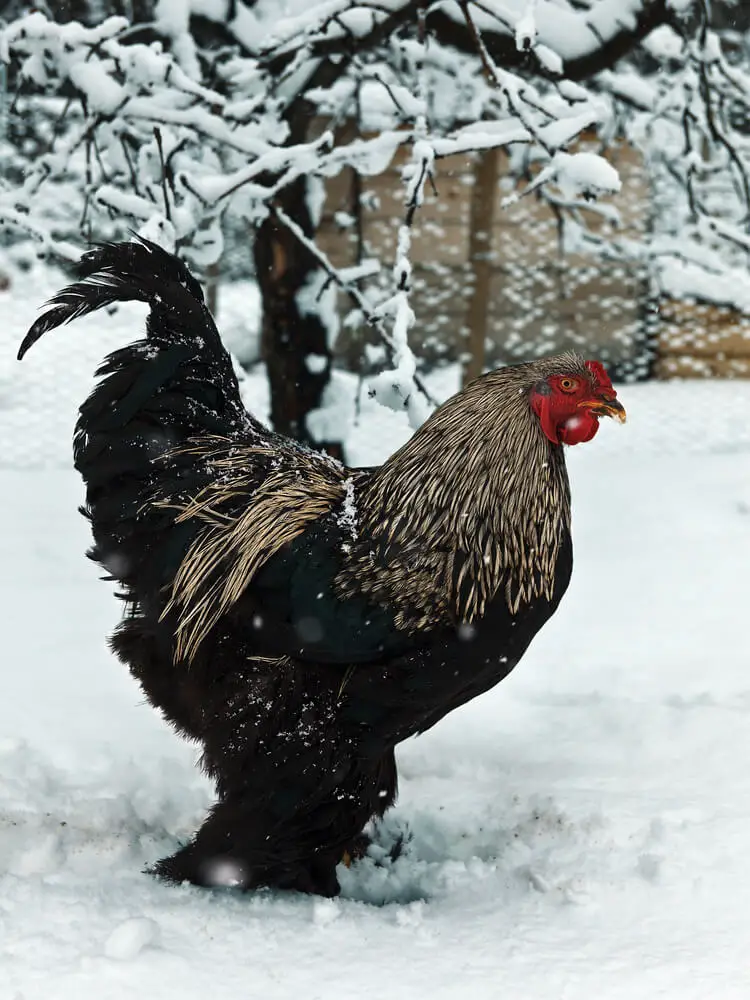
Brahmas, often referred to as gentle giants, are notable for their cold hardiness due to their pea comb and extensive feathering. They are among the largest chicken breeds, suitable for both egg and meat production.
Characteristics:
- Cold Hardiness: Exceptional due to pea comb and extensive feathering.
- Egg Production: Lays 3–4 medium brown eggs weekly, especially during cold months.
- Weight: Hens weigh up to 8 lbs, and roosters weigh up to 10 lbs and can grow up to 30 inches tall.
Buff Orpington
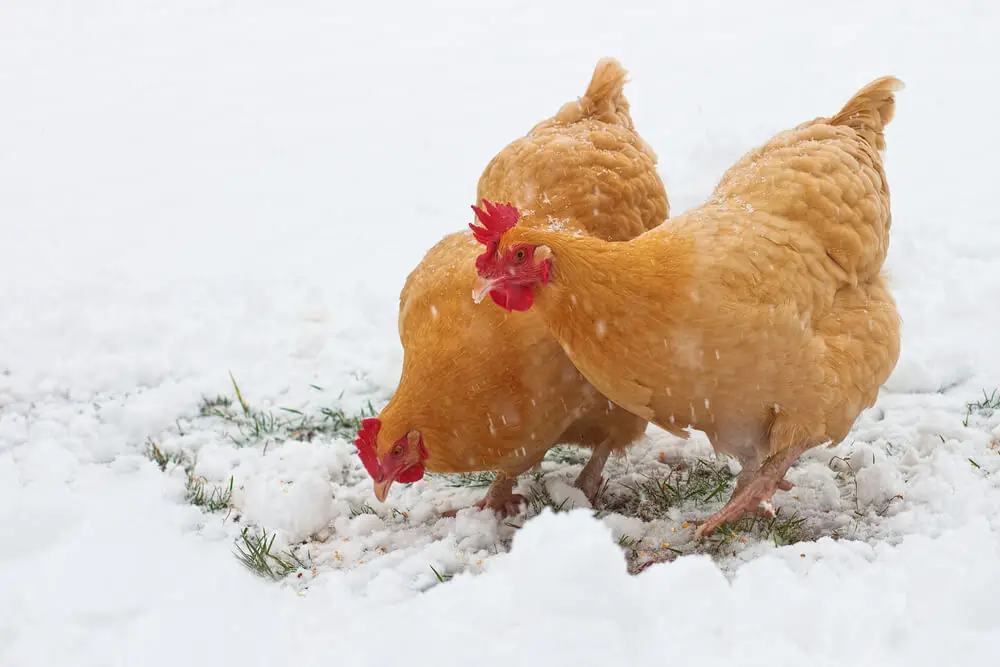
Buff Orpingtons are large, hardy, and low-maintenance birds with dense feathers that tolerate cold well. They are known for their calm, gentle, and docile nature, making them fantastic pets and ideal for beginners.
Characteristics:
- Cold Resistance: Dense feathers provide good cold resistance.
- Egg Production: Lays 200–280 large brown eggs annually.
- Weight: Hens weigh 6–8 lbs and roosters between 8–10 lbs.
Chantecler
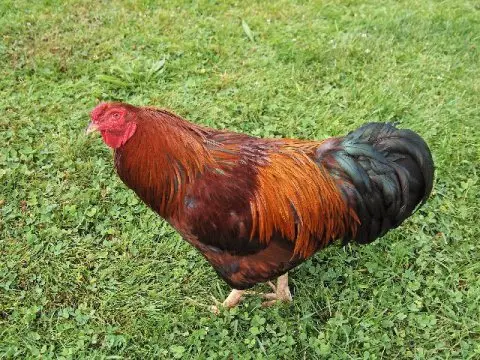
Originating from Canada, Chanteclers are incredibly cold hardy birds with a tiny cushion comb and no wattles, which lay well during the cold months. They are known for their calm, gentle nature and excellent foraging ability.
Characteristics:
- Cold Hardiness: Exceptional, due to their tiny cushion comb and absence of wattles.
- Egg Production: Produces 150–200 medium to large brown eggs annually.
- Weight: Roosters weigh up to 9 lbs, and hens weigh up to 7.5 lbs.
Langshan
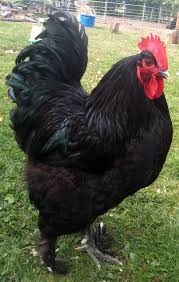
Langshans, one of the oldest breeds in the world from China, are large, striking birds known for their robustness and cold hardiness. They are not very common in the USA but are considered one of the best egg-laying chickens for Alaska.
Characteristics:
- Cold Resistance: Incredibly robust and cold-hardy.
- Egg Production: Produces around 200 large, dark-brown eggs annually.
- Weight: Roosters weigh up to 9 lbs, and hens up to 7 lbs.
Jersey Giant
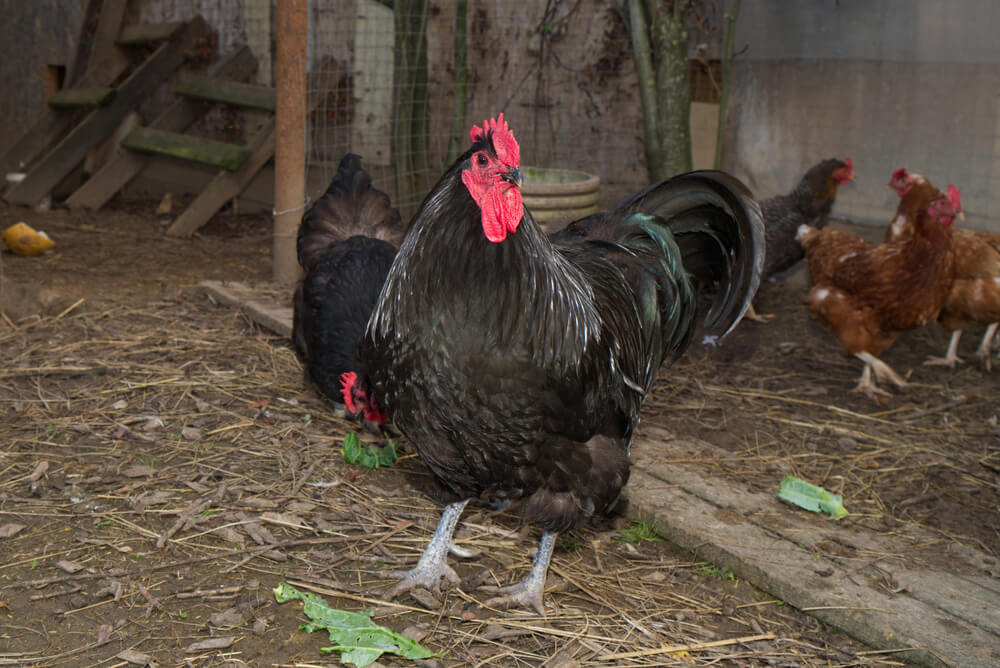
Jersey Giants are one of the largest chicken breeds, known for their friendly and docile nature despite their size. They are often kept as pets and are suitable for both egg and meat production.
Characteristics:
- Size: Hens weigh up to 11 lbs and roosters up to 14 lbs, standing 26 inches high.
- Egg Production: Consistent layers though not as prolific as some other breeds.
- Temperament: Friendly, docile, and enjoy being handled, making them suitable for families.
Sussex
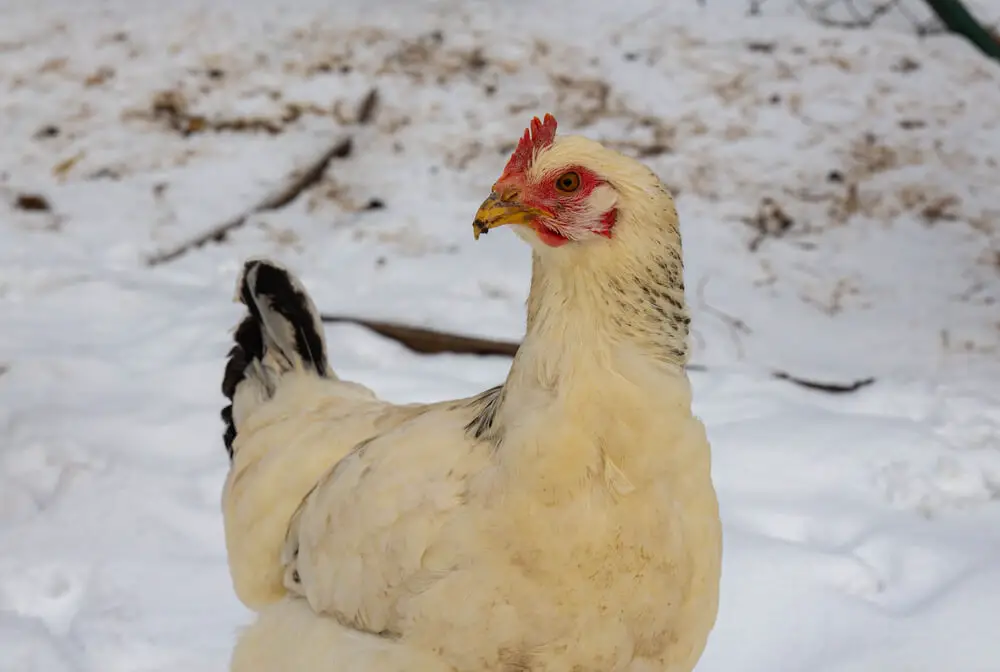
The Sussex chicken breed is known for its adaptability to various weather conditions, making it a suitable choice for Alaska. They are good layers and can also be used for meat.
Characteristics:
- Cold Hardiness: They have a dense feathering that provides good insulation against cold temperatures.
- Egg Production: Sussex chickens lay around 250 to 275 large brown eggs per year.
- Weight: Hens weigh around 7 pounds, while roosters weigh around 9 pounds.
Wyandotte
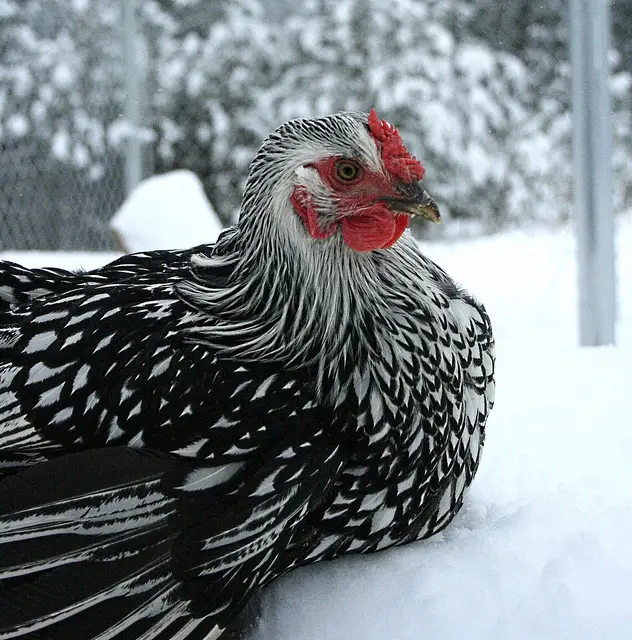
Wyandottes are popular for their beautiful feather patterns and cold hardiness. They have a rose comb, which is less prone to frostbite, making them well-suited for Alaska’s cold climate.
Characteristics:
- Cold Hardiness: Their rose comb and good feathering provide protection against cold.
- Egg Production: They are reliable layers, providing around 200 medium brown eggs per year.
- Weight: Hens weigh around 6 to 7 pounds, while roosters weigh around 8 to 9 pounds.
Plymouth Rock
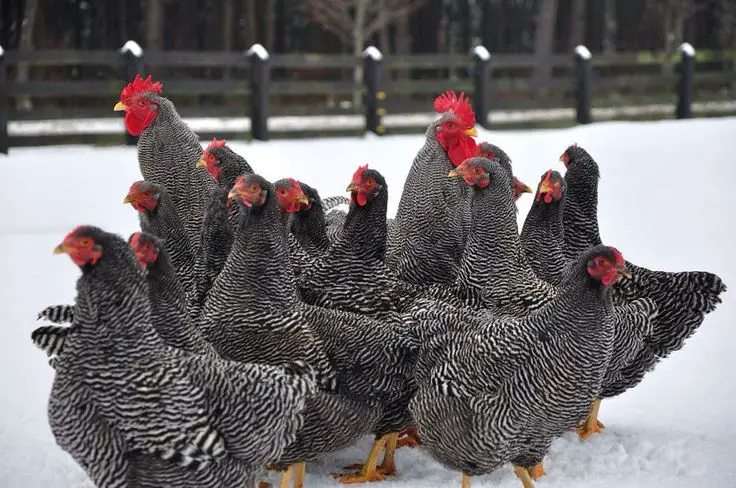
Plymouth Rock chickens, also known as Barred Rocks, are hardy birds known for their excellent egg laying abilities and meat production. They are well-suited for cold climates due to their dense feathering.
Characteristics:
- Cold Hardiness: Dense feathering provides good insulation against the cold.
- Egg Production: They lay around 200 to 280 large brown eggs annually.
- Weight: Hens weigh around 7.5 pounds, while roosters weigh around 9.5 pounds.
New Hampshire
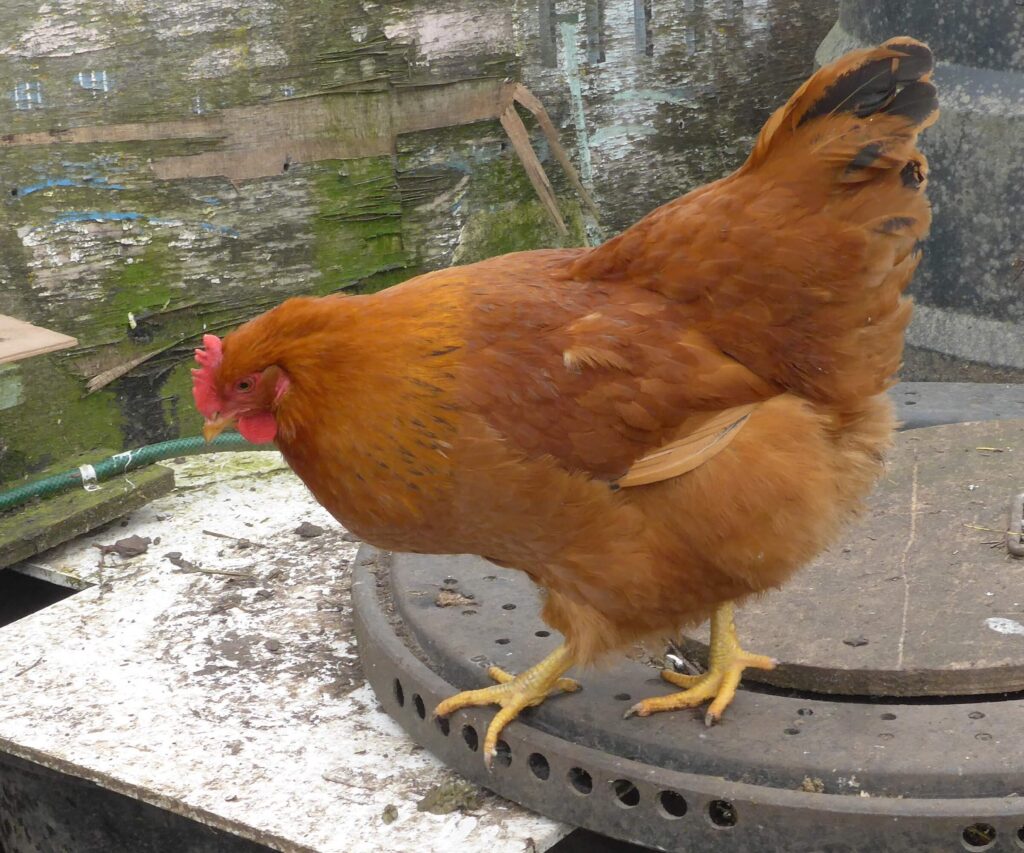
New Hampshire chickens are known for their early maturity and vigorous nature. They are also well-suited to cold climates, making them a good choice for Alaska.
Characteristics:
- Cold Hardiness: They are robust birds that can handle cold weather conditions well.
- Egg Production: New Hampshire chickens lay around 200 to 240 medium to large brown eggs per year.
- Weight: Hens weigh around 6.5 pounds, while roosters weigh around 8.5 pounds.
Cold Weather Preparations for Your Flock
Proper preparation is crucial to ensuring that your chickens can thrive during the harsh Alaskan winters. Here are some essential steps:
- Proper Insulation: Ensure that the chicken coop is well-insulated to retain heat.
- Ventilation: Adequate ventilation is crucial to prevent moisture buildup, which could lead to respiratory issues among the flock.
- Water Supply: Ensure a constant supply of unfrozen water by using heated waterers.
- Supplementary Heat: Provide supplementary heat during extremely cold days while ensuring safety to prevent fires.
- Adequate Lighting: During the short winter days, provide additional lighting to encourage egg production.
- Regular Health Checks: Conduct regular health checks to catch any issues early.
Setting Up the Coop
Insulation and Ventilation
- Insulation Material: Use high-quality insulation material on the walls, roof, and floor.
- Ventilation: Ensure there are adequate ventilation openings to allow fresh air in while keeping the cold wind out.
Coop Design
- Size: Ensure it’s spacious enough to accommodate the number of chickens you plan to keep.
- Protection: Ensure the coop is secure from predators and harsh weather conditions.
- Accessibility: Design the coop for easy access for cleaning, feeding, and egg collection.
Lighting and Heating
- Lighting: Install energy-efficient LED lights on timers to provide the necessary light for egg production.
- Heating: Use safe heating options like flat-panel radiant heaters to provide additional warmth.
Characteristics of an Ideal Coop:
| Feature | Description |
|---|---|
| Insulation | High-quality insulation to retain heat |
| Ventilation | Adequate openings to ensure fresh air circulation |
| Size | Spacious enough to accommodate the chickens comfortably |
| Protection | Secure from predators and harsh weather conditions |
| Accessibility | Easy access for cleaning, feeding, and egg collection |
| Lighting | Adequate lighting for egg production |
| Heating | Safe heating options to provide additional warmth |
Managing Chickens in Extreme Cold
Handling chickens in the extreme cold of Alaska requires diligent care and the right management practices. Here are some tips:
- Regular Monitoring: Regular monitoring helps in early detection and treatment of any health issues.
- Adequate Nutrition: Provide a balanced diet to keep your chickens healthy and to increase their cold tolerance.
- Water Supply: Ensure a constant supply of unfrozen water.
Health Check and Maintenance
- Regular Health Checks: Check for signs of frostbite, especially on the combs, wattles, and feet.
- Prompt Treatment: In case of any health issues, ensure prompt treatment to prevent further complications.
- Preventive Measures: Take preventive measures like applying petroleum jelly to combs and wattles to prevent frostbite.
What to feed chickens in Alaska?
Feeding is a crucial aspect of poultry farming, and in harsh conditions like Alaska, it becomes even more important. Here’s how to ensure your flock receives proper nutrition:
Nutritional Requirements
- High-Energy Diet: Provide a high-energy diet to help the chickens stay warm.
- Supplementation: Provide necessary supplements to ensure a balanced diet and boost their immune system.
- Water: Provide a constant supply of unfrozen water. Heated waterers can be very useful in this regard.
Supplements
- Grit: Essential for digestion, grit should always be available.
- Calcium: Especially for laying hens, calcium supplements are crucial.
- Vitamins and Minerals: Additional vitamins and minerals can help in combating stress during the cold months.
Breeding Chickens in Alaska
Breeding can be challenging in Alaska due to the extreme cold conditions. Here are some tips for successful breeding:
Choosing the Right Breed
- Cold-Hardy Breeds: Select breeds known for their cold hardiness.
- Good Egg Production: Choose breeds with good egg production to ensure a successful breeding program.
Breeding Tips
- Timing: Time the breeding season to avoid the extreme cold months.
- Proper Nutrition: Ensure proper nutrition to both the hens and roosters for successful breeding.
Conclusion
Embarking on a poultry farming venture in the unique and demanding climatic conditions of Alaska necessitates a well-thought-out approach. The cornerstone of this endeavor is selecting the right chicken breeds that can withstand and flourish in the cold temperatures prevalent in Alaska.
Breeds like Ameraucana, Australorp, Brahma, Buff Orpington, Chantecler, Langshan, Jersey Giant, Sussex, Wyandotte, Plymouth Rock, and New Hampshire come highly recommended due to their cold hardiness and other favorable characteristics.
Besides choosing the right breed, preparing for the extreme cold, setting up a well-insulated and ventilated coop, ensuring a balanced diet and regular health checks are pivotal steps towards a successful poultry farming experience in Alaska.
Utilizing the wealth of resources available, including insightful articles and educational videos can significantly ease the journey, providing essential knowledge and practical tips.
By following the guidelines and tips provided in this comprehensive guide, poultry enthusiasts and farmers in Alaska are well on their way to creating a thriving, productive, and enjoyable poultry farming venture. This not only provides a self-sufficient lifestyle but also contributes to the local economy and community.
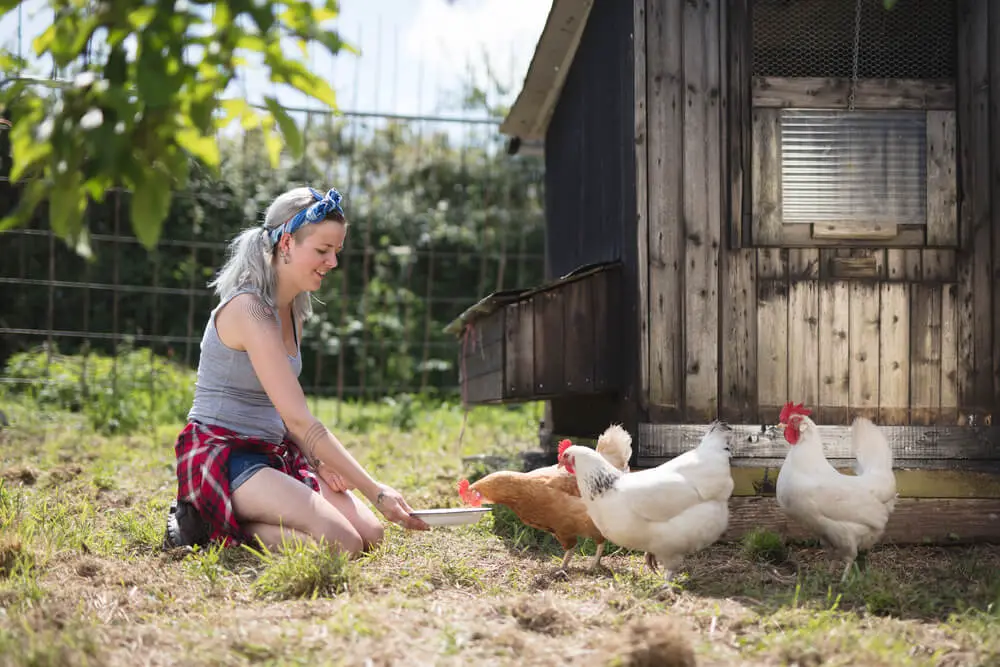
Shannon Stansberry has been engaged in the business of raising chickens for more than 12 years. In 2016, she accomplished the Agriculture & Natural Resources program at Mt. San Antonio College. At present, she tends to more than 80 chickens on her 4-hectare farm. Shannon regularly shares her insights and experience on how to raise healthy and contented chickens on the platform Typesofchickens.com

